Advertisements
Advertisements
Question
Draw a line segment PQ = 8cm. Construct the perpendicular bisector of the line segment PQ. Let the perpendicular bisector drawn meet PQ at point R. Measure the lengths of PR and QR. Is PR = QR?
Solution
Steps of Construction:
1. With P and Q as centers, draw arcs on both sides of PQ with equal radii. The radius should be more than half the length of PQ.
2. Let these arcs cut each other at points R and RS
3. Join RS which cuts PQ at D.
Then RS = PQ Also ∠POR = 90°.
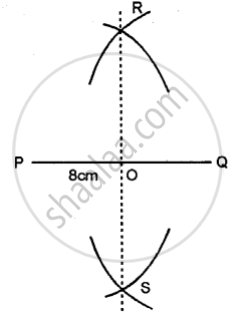
Hence, the line segment RS is the perpendicular bisector of PQ as it bisects PQ at P and is also perpendicular to PQ. On measuring the lengths of PR = 4cm, QR = 4 cm Since PR = QR, both are 4cm each
∴ PR = QR.
APPEARS IN
RELATED QUESTIONS
The adjoining figure shows two straight lines AB and CD intersecting at point P. If ∠BPC = 4x – 5° and ∠APD = 3x + 15°; find:

(i) the value of x.
(ii) ∠APD
(iii) ∠BPD
(iv) ∠BPC
In your note-book copy the following angle using ruler and a pair compass only.
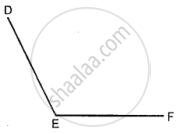
Construct the 120° angle, using ruler and a pair of compass only.
Draw a line segment AB = 7cm. Mark a point Pon AB such that AP=3 cm. Draw perpendicular on to AB at point P.
In the following figure, AB is parallel to CD; find the values of angles x, y and z:
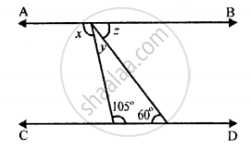
In the following figure, BA is parallel to CD. Find the angles a, b and c:

In the following figure, BA is parallel to CD. Find the angles a, b and c:
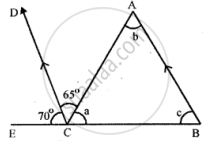
In the following figures, PQ is parallel to RS. Find the angles a, b and c:
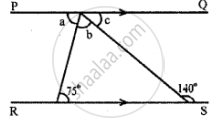
Two straight lines are cut by a transversal so that the co-interior angles are supplementary. Are the straight lines parallel?
Draw a line AB = 9 cm. Mark a point P in AB such that AP=5 cm. Through P draw (using set-square) perpendicular PQ = 3 cm. Measure BQ.
